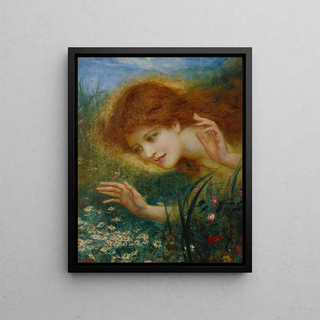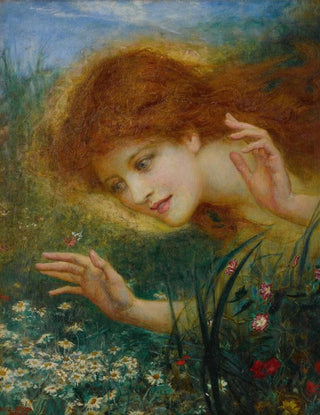Art print | Discovering daisies - Henry John Stock Source: Reproduction | À la découverte des marguerites - Henry John Stock


View from behind

Frame (optional)
The artwork "At the Discovery of Daisies" by Henry John Stock transports us into a world filled with tenderness and serenity. This art print, depicting a bucolic scene where children explore a field of flowers, evokes nostalgia for childhood innocence and the simple beauty of nature. Through delicate pastel colors and a harmonious composition, Stock manages to capture the very essence of these fleeting moments that we cherish. The daisies, symbols of purity and joy, become here the guiding thread of a visual narrative that invites contemplation and daydreaming.
Style and uniqueness of the art print
Henry John Stock's style is distinguished by his ability to blend realism with a touch of idealism. In "At the Discovery of Daisies," the meticulous details of the flowers and the children's faces demonstrate a mastered technique, while infusing an atmosphere of lightness and magic. The carefully orchestrated play of light illuminates the children's faces, emphasizing their wonder in the face of nature. The color palette chosen by the artist, dominated by soothing greens and vibrant yellows, creates a visual harmony that enhances the feeling of joy and escape. This art print is much more than a simple representation; it is an invitation to rediscover the beauty of the world through a child's eyes.
The artist and his influence
Henry John Stock, an emblematic figure of 19th-century British art, established himself through his unique approach to genre painting. Trained at the Royal Academy of Arts, he was influenced by the great masters of the past while developing a personal style that is his own. His work is characterized by a particular attention to detail and a deep respect for nature, elements that are reflected in "At the Discovery of Daisies." Stock was also a keen observer of society in his time, and his paintings often reflect the values and concerns of everyday life. By exploring themes of childhood and nature, he managed to reach a broad audience, making him a well-regarded artist among critics and art lovers alike.

Matte finish

View from behind

Frame (optional)
The artwork "At the Discovery of Daisies" by Henry John Stock transports us into a world filled with tenderness and serenity. This art print, depicting a bucolic scene where children explore a field of flowers, evokes nostalgia for childhood innocence and the simple beauty of nature. Through delicate pastel colors and a harmonious composition, Stock manages to capture the very essence of these fleeting moments that we cherish. The daisies, symbols of purity and joy, become here the guiding thread of a visual narrative that invites contemplation and daydreaming.
Style and uniqueness of the art print
Henry John Stock's style is distinguished by his ability to blend realism with a touch of idealism. In "At the Discovery of Daisies," the meticulous details of the flowers and the children's faces demonstrate a mastered technique, while infusing an atmosphere of lightness and magic. The carefully orchestrated play of light illuminates the children's faces, emphasizing their wonder in the face of nature. The color palette chosen by the artist, dominated by soothing greens and vibrant yellows, creates a visual harmony that enhances the feeling of joy and escape. This art print is much more than a simple representation; it is an invitation to rediscover the beauty of the world through a child's eyes.
The artist and his influence
Henry John Stock, an emblematic figure of 19th-century British art, established himself through his unique approach to genre painting. Trained at the Royal Academy of Arts, he was influenced by the great masters of the past while developing a personal style that is his own. His work is characterized by a particular attention to detail and a deep respect for nature, elements that are reflected in "At the Discovery of Daisies." Stock was also a keen observer of society in his time, and his paintings often reflect the values and concerns of everyday life. By exploring themes of childhood and nature, he managed to reach a broad audience, making him a well-regarded artist among critics and art lovers alike.






